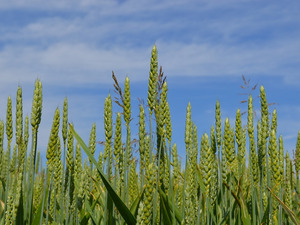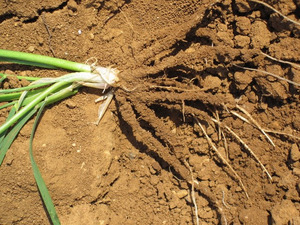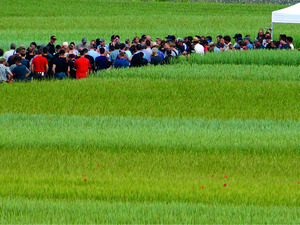Project aims of SolACE - Solutions for improving Agroecosystem and Crop Efficiency for water and nutrient use
SolACE's overarching goal is to help European agriculture facing the challenge of dealing with more frequent combined limitations of water and nutrients in the coming decades, through the design of novel crop genotypes and agroecosystem management innovations to improve water and nutrient (i.e. N and P) use efficiency.
To achieve this goal, SolACE is focusing its activities on three major European crops - potato, bread and durum wheat - to identify the
- optimum combinations of above- and below-ground traits for improving resource use efficiency,
- best-performing genotypes under combined water and N/P stresses and
- novel practices that make better use of plant-plant and plant-microbe interactions to access water, N and P resources in conventional, organic and conservation agriculture.
Specific objectives
- identify most probable present day and future scenarios of combined water and nutrient stresses across the various pedo-climatic zones of Europe,
- identify crop responses to such realistic combined stresses,
- evaluate water and nutrient acquisition efficiency and define the corresponding, relevant below-ground traits (related to roots, rhizosphere microbiome and symbiosis),
- define the combination of below- and above-ground traits for designing resource-efficient crops (ideotypes),
- identify genes, molecular markers and genomic selection models for improved yield under combined stresses,
- thereby design novel, resource-efficient ideotypes or genotypes (hybrids for bread wheat and potato),
- evaluate biotic interactions at play in the tested management innovations,
- design efficient microbial inoculants and their combinations, efficient genotype mixtures and legume-based rotation or reduced tillage strategies, and test these in field conditions,
- develop novel enabling technologies for monitoring crop or soil water and nitrogen status,
- evaluate on-farm the agronomic, economic and environmental performances of the tested innovations at the field scale in several networks of farmers to ultimately assess local solutions and barriers for the uptake of the tested innovations.
Approaches
SolACE is implementing complementary approaches, from data mining, modelling, phenotyping in high throughput platforms and field conditions, to experiments in research stations and farmer networks in contrasting pedo-climatic zones.
Innovations
The tested innovations include crop genotype mixtures, legume-based crop rotations and cover crops, microbial inoculants, as well as improved decision support systems and hybrids or products from genomic selection and participatory evolutionary breeding schemes.
Involvement of actors and stakeholders
SolACE is implementing a double interactive innovation loop, based on agroecosystem management and breeding strategies, and engages diverse end-users across the production chain, from farmers and farm advisors to NGOs, SMEs and larger industries in the agri-business sector, through the SolACE consortium and a range of stakeholder events.
Dissemination
Through the co-design and co-assessment with the end-users of the selected novel breeding and management strategies to increase the overall system resource use efficiency, the findings of SolACE are being disseminated to a broad spectrum of stakeholders, including policy-makers.



 tap and then scroll down to the Add to Home Screen command.
tap and then scroll down to the Add to Home Screen command.